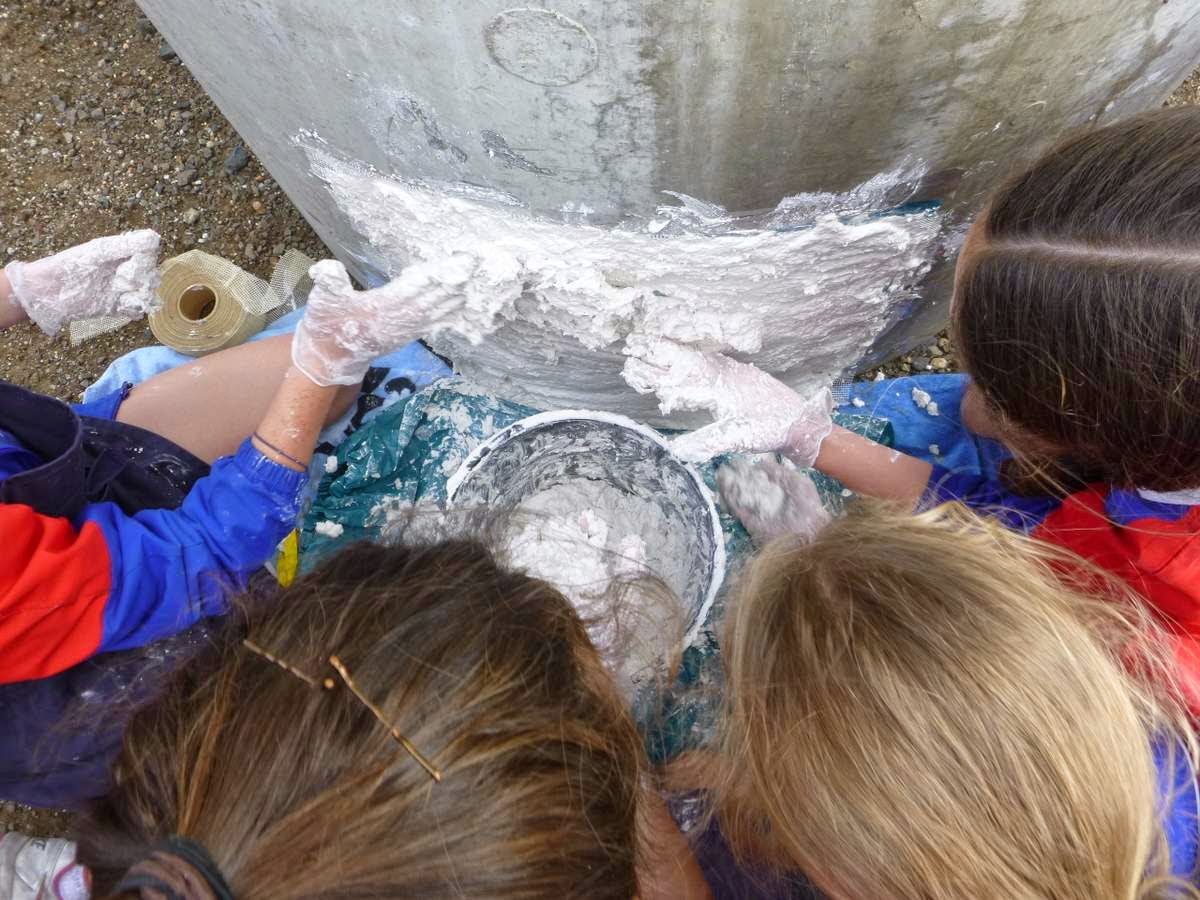A concrete cylinder on Overnewton Road.
After searching for who owns this cylinder,I have been told it is Overnewton College. This project began its planning early 2014 and in September it will be underway with a year 8 class of Overnewton College Art Students and their teacher Louisa Zaghis, who is always up for an adventure.
___________________________________________________________
This cylinder is now being made into a ceramic mural with a team of year 8 students from Overnewton College.
The keilor Historical Society have suggested that the design celebrate the goldrush years when the Town of Keilor developed substantially, being the way out of Melbourne for heading to the goldfields in Ballarat and Bendigo. The Artist and students will work closely with the Historical Society to research possibilities for the design and the relevant historical information.
Wednesday 10th September
The President of the Keilor Historical Society Susan Jennison came to visit the year 8 class at Overnewton to share with us the history of the Goldrush and how it made Keilor into a bustling town.
We were all very interested in the photographs, artworks and stories that she had to tell us. By the end of this session, each student had some ideas of what aspects of this history they would like to represent on the cylinder mural.
Thankyou very much to Susan for donating her time to come and speak with us and sharing with us such valuable information.
We set about measuring the cylinder and we measured it using two different objects. One was a metal ruler, which we used to measure the height and another was a tape measure which was in inches.
A special team of plasterers made up some paper-plaster and made a cast of the curve of the cylinder, so that we can use it to shape the ceramic artworks that will be made for the mural. The cylinder was first covered with plastic and then plasterers tape and then paper plaster made with toilet paper and plaster was made and applied to the surface.
Another team also covered the cylinder with strong brown paper and worked on the design by drawing onto the paper. This was a very enjoyable activity and the design could be discussed and labelled as it was drawn onto the cylinder.
After this we removed the plaster mould and put it into our barrow and set off back to the school.
We went to look at Overnewton Castle. When Debbie knocked on the door, out came Matt the Wedding planner who gave us the guided tour. He also showed us the old oak tree that was planted when the castle was built in 1949, which Susan had told us about. Very exciting to find such an old tree, which was also so beautiful with fresh green leaves.
After this we went back to school and sorted out who wanted to make what aspect of the mural.
A very busy but productive two hours!
our two spades who took part in role-playing the life of the goldrush travellers.
wrapping the cylinder in paper
our finished plaster cast of the curb, travelling back to school in the wheel-barrow.
at Overnewton Castle one of the workmen left his metal spacer in between the bricks and there it stayed for over 150 years!
our working out of who does what.
a mark on the concrete most likely made when it was poured in 1986?
Who was HW?
So the cylinder is 32 years old.
the plaster slab drying on the cylinder






































